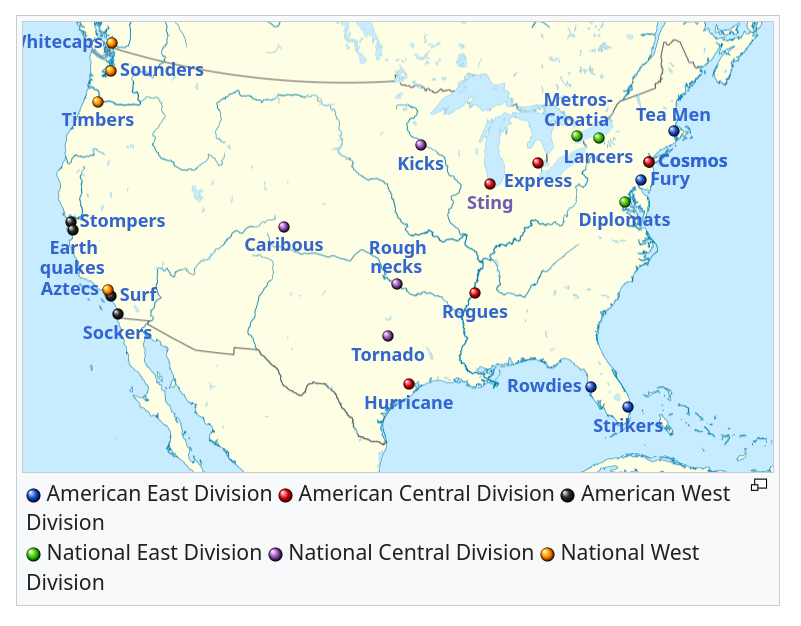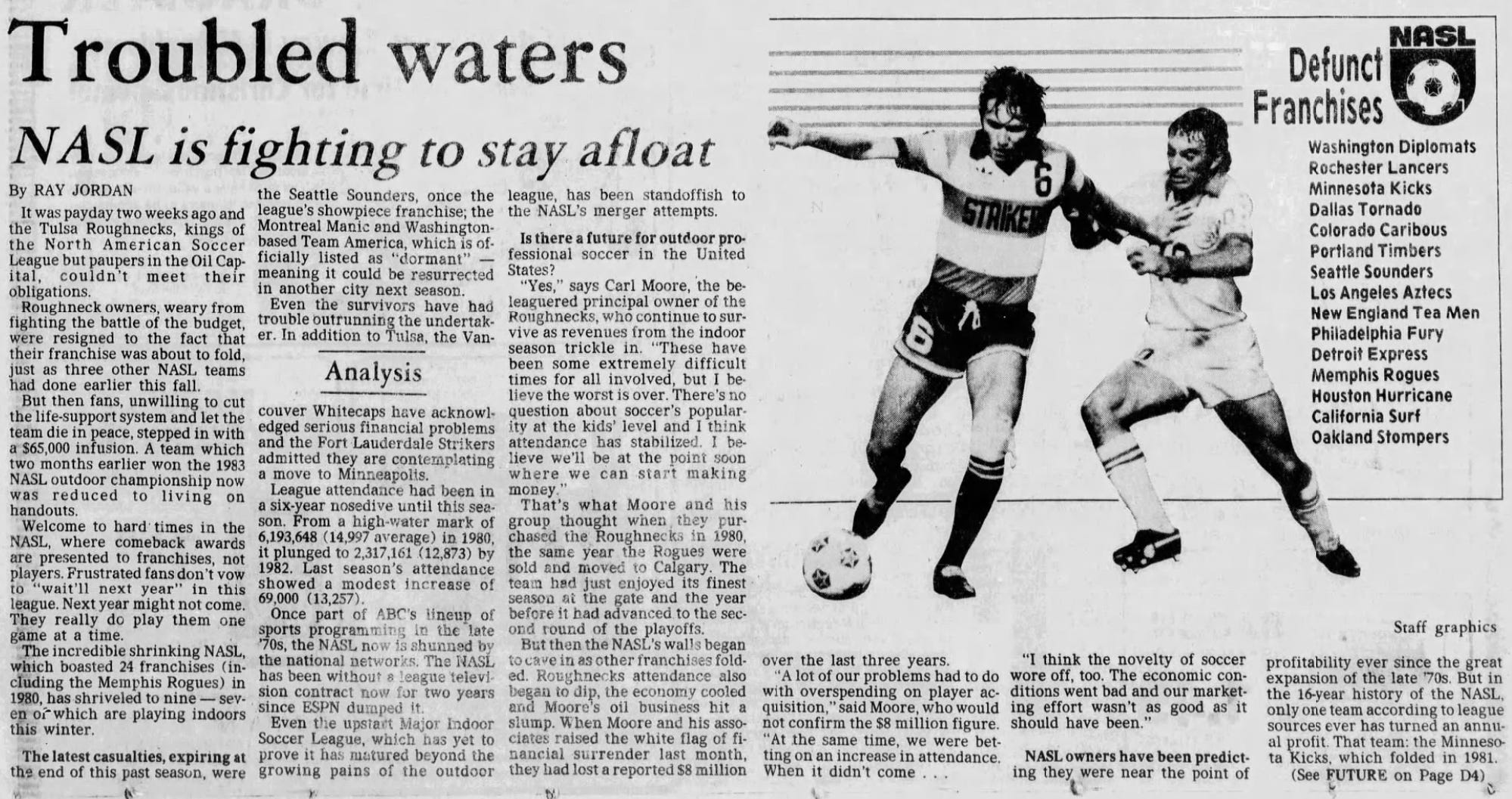The Sins Of The NASL
I’ve spent a bit of time talking about the wild and crazy world of MLS salary caps. It’s a bit technical, I know. However, if we keep in mind the reason why those salary caps exist in the first place, we probably have a better gauge of just how effective those rules really are.
The NASL had a big problem in the 1970s. It tried to grow too fast.
It’s obvious when you look back. In 1977, the league looked like this:
There were 18 teams in all, located mostly in coastal cities.
Travel was obviously a concern, especially for teams in the Midwest and Southeast. The NASL had a strong following in the Pacific Northwest, and the cities of Vancouver, Seattle, and Portland remain strongholds of American soccer to this day. However, southern California was always indifferent to the league, and teams like the Washington Diplomats had to rely heavily on gimmicks just to get fans to the park.
The average attendance was a little over 13,500. That’s not bad — but, then again, a good percentage of these teams played in stadiums that seated over 50,000.
Now take a look at the league in 1978:
That’s right. In addition to continuing to pay large salaries to European stars in their twilight years, the NASL actually expanded in 1978. The league added a whopping 6 teams that year to get to 24.
Attendance dropped to just over 13,000 per game. It turns out that California really wasn’t ready to support 5 teams, and that Tulsa and Houston were lukewarm to the league at best.
The next major change came in 1981, by which time three teams had folded. This included the Washington Diplomats. The inability of the league to maintain a competitive team in the nation’s capital was certainly a symbol of the decline to come.
This is what things looked like in 1981:
And it went downhill from there.
Despite drawing more fans per game in 1981, the league was in freefall. Salaries were out of control, and teams started having a hard time making payroll.
By 1983, things had gotten ridiculous:
Now, what you’ll notice in this article is that the problem wasn’t just expensive player salaries. It was a combination the following factors:
Teams that never made a profit
Recognizable teams folding
Lack of a national television contract
Direct competition from the Major Indoor Soccer League (which prompted the NASL to form its own indoor league — a move that looks insane in hindsight)
Extremely uneven team salaries, leading to a lack of competitive balance
The ridiculous Team America experiment
The Unitd States missing out on the 1986 World Cup (not 1984, as stated in the article)
And then you look at the actual payroll.
So how is the MLS doing on these fronts?
Well, we know that the MLS has stringent rules in place to keep salaries under control. As we’ve discussed, however, the teams can’t seem to help themselves, and have a tendency to spend much more money than they have.
This leads to interesting observations:
According to this slightly dated chart, most teams still are not making a profit. Real Salt Lake, for example, only broke even in 2022 — about a decade and a half after it was founded.
Three teams have folded, one of which was a charter member of the league
A television deal with Apple TV, which might be risky considering one has to buy into the Apple ecosystem to have access
No major competition from other American soccer leagues, thanks in large part to the aggressive way the MLS maintains its monopoly
Competitive balance issues, most notably involving Inter Miami — issues that arise because of the fundamentally broken Designated Player system
However, there is no awful Team America experiment (yet, at least), and the United States will host the 2026 World Cup — albeit together with Canada and Mexico. This, of course, presupposes that politics in the United States don’t derail all cooperation with Canada and Mexico, which is still a real possibility. At the moment, it seems that President Trump is in favor of the World Cup arrangement, though this might change.
Though the MLS has outlived the NASL, I don’t see a lot of evidence that its aggressive policies have actually absolved it from the sins of its ancestor organization. If you ask me, it looks like more of the same.






